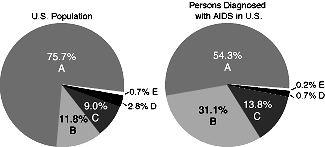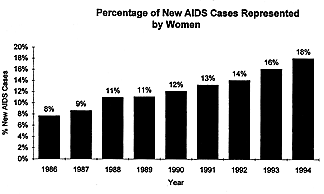Covering the Epidemic: AIDS in the News Media, 1985-1996
Media Coverage Of AIDS: Broad-Based, Consistent Over Past Decade
Focus Shifts, However, From Science/Medicine to Celebrity-Oriented
Embargoed for release until: 9:00 a.m. E.T., Wednesday, June 26, 1996
Contact: Matt James or Tina Hoff
Washington, D.C. — Media coverage in the U.S. of AIDS over the past decade has generally remained broad-based and consistent, emphasizing prevention and protection and avoiding becoming overly politicized, although focusing almost entirely on the epidemic as a domestic concern. However, while coverage in the early years of the epidemic focused heavily on the scientific and medical aspects of AIDS as an important new threat to public health, news items concerning AIDS in recent years have become more celebrity-oriented. These are among the key findings of the Kaiser Family Foundation’s new analysis of newspaper and network television coverage of AIDS from 1985 through early 1996. The study was conducted for the Foundation by Princeton Survey Research Associates (PSRA), and will be disseminated by the Columbia Journalism Review.
“By and large, the media did a good job covering AIDS over the past ten years,” said Mark Smith, executive vice president of the Kaiser Family Foundation. “This may be why Americans have generally high levels of knowledge about how HIV is transmitted and can be prevented.”
The Kaiser/PSRA study analyzed media coverage of AIDS over the last ten years by examining 26 randomly-selected “typical” news weeks and eight peak weeks of AIDS news coverage triggered by a “major event” involving AIDS. Three national newspapers were monitored (The New York Times, The Washington Post, and USA Today), as well as the evening news programs of the three major broadcast networks: (ABC World News Tonight, CBS Evening News and NBC Nightly News). In addition to these national media outlets, two regional newspapers were selected: The St. Louis Post-Dispatch to represent local media in this country’s heartland; and The San Francisco Chronicle to represent local media serving a geographic areas disproportionately affected by AIDS.
Media Maintained Consistent, Broad-Based Coverage
During typical news weeks, the media examined in this study ran approximately 30 stories per week focused on AIDS. In a major event week, that number increased to at least 50 stories, registering an “off-the-charts” reading of 259 stories during the biggest AIDS news week in history — when Magic Johnson’s announced to the world that he was HIV-positive (November 1991). At least temporarily, major AIDS news events increase the overall volume and prominence of AIDS news stories.
Over the ten years, AIDS has not developed into a political story. In fact, only 3% of all stories in typical news weeks dealt with the impact of AIDS on the political process. Nor has AIDS coverage tended to focus on specific populations; rather most stories dealing with the impact of AIDS highlight its effects on all HIV-positive individuals (33%) or two or more of the higher-risk groups (29%).
Prevention/Protection a Major Focus of AIDS Reporting
AIDS prevention was the main focus of most AIDS news stories run during typical news weeks (20%), followed by treatment (13%), transmission (13%) and research (13%). Media coverage of these public education topics during typical news weeks peaked in the mid-to-late 1980s. Coverage of celebrities who have AIDS or are HIV positive, particularly Magic Johnson, have in recent years generated significant additional coverage in this area and at times when people may be more attentive.
“Though AIDS coverage has been thorough, trends in coverage indicate that this may be changing,” said Andrew Kohut, PSRA’s chairman. “Stories are getting shorter, focusing more on celebrities, and increasingly being found in the soft news sections of papers. Over time, this could have an impact on the public’s knowledge of issues in AIDS.”
AIDS Treated As a Domestic Story
The media treated AIDS as almost exclusively a domestic story. Overall, only 4% of AIDS stories were filed from non-U.S. datelines, and the sole recurring lead with any international component involved AIDS as an immigration issue (1%).
Major Changes in AIDS News Coverage Over Time
- Celebrities have replaced the scientific/medical community as top news makers in AIDS stories. In 1989, members of the scientific and medical community were the principal news maker in about three of 10 (29%) AIDS focused-stories during typical weeks, while celebrities or public figures played this role in only 5% of stories. In five of the six subsequent years, however, celebrities emerged as the leading principal news maker. In 1995, the last full year of the study, celebrities outscored the scientific and medical community by 25% to 14% as the top news maker.
- AIDS coverage has shifted toward the “softer” news sections, such as sports and lifestyle. Prior to 1991, AIDS coverage was virtually nonexistent in sports sections of newspapers and newscasts. But in three of the five years from 1992-95, sports accounted for 15% or more of all AIDS-focused stories. Since the late 1980s, the lifestyle section’s share of AIDS coverage has also about doubled. Coverage in both was no doubt driven by the increased focus on celebrities as news makers around AIDS issues.
- AIDS has been incorporated into the regular news agenda. In 1987, two-thirds (69%) of all news stories with any mention of AIDS had AIDS as their primary focus, while one-third (31%) made only a passing reference to the disease . By 1994, these figures reversed themselves (30% primary focus vs. 70% not primary focus) as AIDS was more often treated as one of several national problems along with crime, substance abuse, homelessness, etc.
- The length of the average AIDS news story has decreased. In three of the first four years studied (1985-88), over a quarter of all AIDS-focused newspaper stories run during a typical week were 700 words or more. In subsequent years, longer articles accounted for such a large a share of AIDS newspaper stories only once (1993=26%).
Trends in Media Coverage of AIDS and the Public’s Knowledge and Attitudes Toward the Disease and Epidemic. Though surveys often find that Americans are ill-informed about most national issues, they are generally knowledgeable about AIDS prevention and treatment, which have been major focuses of media coverage over the past 10 years. According to the Kaiser Family Foundation’s survey of Americans on AIDS, most Americans know that AIDS can be transmitted through sexual intercourse (97%), that a pregnant woman with AIDS can pass the virus to her baby (94%), that no vaccine is currently available to protect a person from getting AIDS (88%), and that drugs are available that can lengthen the life of a person infected with AIDS (75%).
One notable gap in the public’s knowledge, however, is a misperception among most Americans (51%) that the proportion of AIDS cases that occur inside the U.S. relative to the rest of the world is greater than it really is. This may be due in part to the lack of international AIDS stories in the U.S. media, which largely focuses on the epidemic from a domestic perspective.
Americans say they rely heavily upon the news media for information on AIDS, with television (67%), newspapers (54%) and magazines (50%) being cited as the top three major sources for the public of AIDS information.
Methodology
For this study of AIDS news coverage, Princeton Survey Research Associates examined over 3,100 news stories including the terms “AIDS” or “HIV” that appeared in selected newspapers and television newscasts during 34 designated weeks between 1985 and 1996.
The Kaiser Survey on Americans and AIDS/HIV was a national random-sample telephone survey of 1,511 adults, 18 years and older, including over samples of 250 African Americans and 250 Hispanics. The survey was designed by the Kaiser family foundation and PSRA and was conducted by PSRA between November 27-December 17, 1995.


